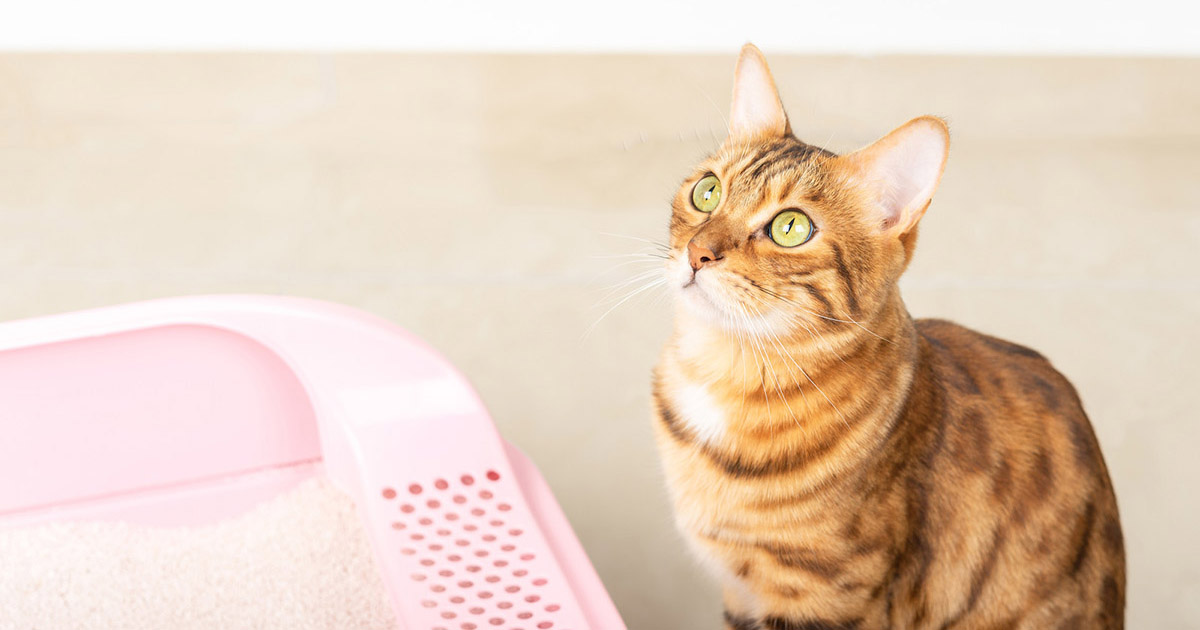We've stumbled upon this great article involving Don’t flush cat feces down the toilet below on the net and believe it made good sense to talk about it with you on this site.

Introduction
As pet cat owners, it's vital to be mindful of exactly how we take care of our feline pals' waste. While it might seem hassle-free to flush cat poop down the bathroom, this practice can have harmful repercussions for both the environment and human wellness.
Ecological Impact
Purging pet cat poop introduces dangerous virus and bloodsuckers into the water supply, posturing a significant threat to aquatic environments. These impurities can adversely influence marine life and compromise water quality.
Wellness Risks
Along with ecological issues, purging feline waste can additionally posture health and wellness risks to human beings. Cat feces might consist of Toxoplasma gondii, a parasite that can trigger toxoplasmosis-- a potentially extreme disease, especially for expectant females and people with weakened body immune systems.
Alternatives to Flushing
Fortunately, there are safer and extra accountable means to deal with cat poop. Think about the following choices:
1. Scoop and Dispose in Trash
The most common method of taking care of cat poop is to scoop it right into an eco-friendly bag and throw it in the trash. Be sure to make use of a specialized clutter scoop and take care of the waste immediately.
2. Use Biodegradable Litter
Opt for naturally degradable feline clutter made from products such as corn or wheat. These litters are eco-friendly and can be safely gotten rid of in the garbage.
3. Hide in the Yard
If you have a backyard, consider burying feline waste in a designated area away from vegetable yards and water resources. Make certain to dig deep sufficient to prevent contamination of groundwater.
4. Install a Pet Waste Disposal System
Purchase a pet garbage disposal system especially made for pet cat waste. These systems make use of enzymes to break down the waste, lowering smell and ecological impact.
Conclusion
Accountable animal ownership prolongs past giving food and sanctuary-- it likewise involves proper waste management. By refraining from flushing feline poop down the bathroom and choosing alternate disposal approaches, we can decrease our ecological footprint and protect human health and wellness.
Why Can’t I Flush Cat Poop?
It Spreads a Parasite
Cats are frequently infected with a parasite called toxoplasma gondii. The parasite causes an infection called toxoplasmosis. It is usually harmless to cats. The parasite only uses cat poop as a host for its eggs. Otherwise, the cat’s immune system usually keeps the infection at low enough levels to maintain its own health. But it does not stop the develop of eggs. These eggs are tiny and surprisingly tough. They may survive for a year before they begin to grow. But that’s the problem.
Our wastewater system is not designed to deal with toxoplasmosis eggs. Instead, most eggs will flush from your toilet into sewers and wastewater management plants. After the sewage is treated for many other harmful things in it, it is typically released into local rivers, lakes, or oceans. Here, the toxoplasmosis eggs can find new hosts, including starfish, crabs, otters, and many other wildlife. For many, this is a significant risk to their health. Toxoplasmosis can also end up infecting water sources that are important for agriculture, which means our deer, pigs, and sheep can get infected too.
Is There Risk to Humans?
There can be a risk to human life from flushing cat poop down the toilet. If you do so, the parasites from your cat’s poop can end up in shellfish, game animals, or livestock. If this meat is then served raw or undercooked, the people who eat it can get sick.
In fact, according to the CDC, 40 million people in the United States are infected with toxoplasma gondii. They get it from exposure to infected seafood, or from some kind of cat poop contamination, like drinking from a stream that is contaminated or touching anything that has come into contact with cat poop. That includes just cleaning a cat litter box.
Most people who get infected with these parasites will not develop any symptoms. However, for pregnant women or for those with compromised immune systems, the parasite can cause severe health problems.
How to Handle Cat Poop
The best way to handle cat poop is actually to clean the box more often. The eggs that the parasite sheds will not become active until one to five days after the cat poops. That means that if you clean daily, you’re much less likely to come into direct contact with infectious eggs.
That said, always dispose of cat poop in the garbage and not down the toilet. Wash your hands before and after you clean the litter box, and bring the bag of poop right outside to your garbage bins.
https://trenchlesssolutionsusa.com/why-cant-i-flush-cat-poop/

I stumbled upon that blog entry about How to Dispose of Cat Poop and Litter Without Plastic Bags while surfing around the internet. Sharing is good. Helping people is fun. I value reading our article about Can You Flush Cat Poop Down The Toilet?.
Estimate Free